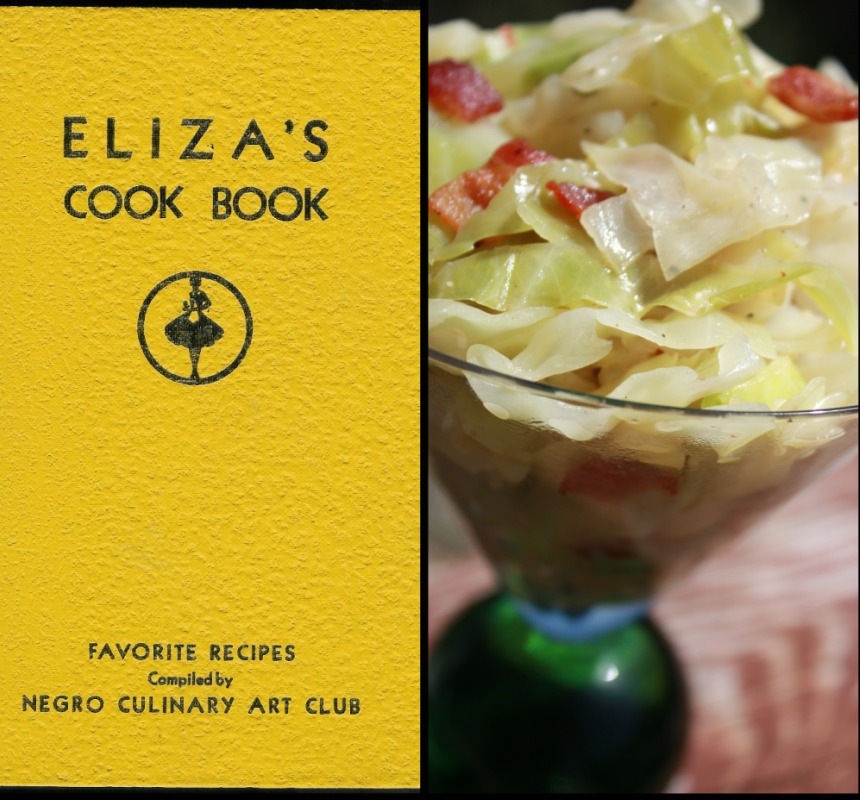I had already imagined the delicacies and grace that would be rendered by Eliza’s Cook Book: Favorite Recipes Compiled by Negro Culinary Art Club of Los Angeles long before I ever bid my way to a rare and highly-coveted copy. I can tell you this sophisticated gem of some 100 pages is a miraculous find and a lovely example of African American flair in the ever-present asymmetry of the Jemima cliché. It shows that there was another side to black female cooks – a side with class.
Eliza was organized by Beatrice Hightower Cates and published at a time when national pursuits – from board games and radio to mystery novels by Agatha Christie – helped Americans escape the rigors of Depression-era living, while field writers for the Federal Writer’s Project, a part of the Works Progress Administration, recorded the life stories and oral histories of former slaves.
Amidst all the resources women had for scientific cooking and healthful meal planning the members of the Culinary Art Club obviously noticed a void. Cooking is indeed a science, but it is also an art – one that requires special attention, whether the cook is occupied with a simple method like brewing coffee or a more elaborate project, such as making a velvety sauce. Cates and the members of her club clearly knew the pleasures of fine cooking and took pride in their extensive catalog of “ladies’ luncheon” and light dinner dishes.
The recipes were decidedly upscale. To acknowledge the cultural tradition of hospitality and enrichment, Eliza was “Dedicated to the mothers of the members of the Culinary Art Club,” women who probably descended from slaves. And yet, I couldn’t help but notice once again how few historically Southern recipes are here. At first glance this practice seems disingenuous, but I don’t think it is as simple as that.
Eliza’s liberated cooks probably had unlimited access to finer cuts of meat and better quality vegetables, enabling them to extend their repertoire beyond biscuits, cornbreads, and croquettes. At least that’s what is reflected in the recipes they selected for their cookbook. Dishes range from assorted canapes, to creamy bisques and soups, saucy fish and lobster concoctions, all manner of meat and game (including steaks, roasts, and casseroles), vegetable sides from A to Z, and dozens of rich breads and sweets.
Neither cabin methodology nor the haze of hard labor that hovered over black kitchens appears to restrict their creativity. They didn’t let the yolk of tough economic times, lack of information, or even minimal cooking skills stifle them. Nor should we.
Times like these call for a return to the kitchen, and these women prove to us that trip doesn’t have to be laborious or difficult. Just get out a simple, but classic recipe and practice, practice, practice. When it’s time to serve your masterpiece, remember two the things the Culinary Art Club teach us: Exceptional cooks aren’t born, they are made; and attitude is everything.
Even a homespun recipe like smothered cabbage can be made extra special, as Cates recommends. She simply layers shredded cabbage in a casserole with tomatoes, bacon, onions and green pepper, then crowns the dish with a dusting of Parmesan cheese before baking.
This basic cabbage saute should help get your imagination started.
Sauteed Cabbage with Bacon
Ingredients
- 6 slices bacon, cut into pieces
- 1 medium onion, diced
- 1 clove garlic, minced
- 1 small head cabbage, thinly-sliced
- 1 teaspoon salt
- 1/2 teaspoon black pepper
Instructions
- Saute bacon in a hot skillet with a tight-fitting lid, until almost done. Add onion and cook until onion is translucent. Stir in garlic and cabbage and cook 3 to 5 minutes, stirring occasionally to prevent sticking. Cover skillet and reduce heat to low. Steam cabbage to desired doneness, 15 minutes for tender-crisp, 30 minutes for completely wilted. Season with salt and pepper before serving.
Number of servings: 6



Toss in some cooked egg noodles for a tasty one dish side for pork chops.
add sliced carrots, quartered baby new potatoes, chopped celery,a coarsely chopped red bell pepper, frozen cut okra and you’ve got a meal. serve it with buttermilk jalapeno-cheese cornbread and you’ve got heaven on a plate.
Hello, my grandmother and aunt were both club members who helped write the Eliza’s Cook Book: Favorite Recipes Compiled by Negro Culinary Art Club of Los Angeles. I want a copy of it.
Rhonda, Interesting timing. Old copy of Eliza’s Cook Book just fell into my hands. Do you still want one?
I also have a copy of this book that came from Dorothy Hightower Taylor, sister-in-law of Beatrice Hightower. I am looking for possible collectors who would like a copy.
Cheryl-do you still have a copy of this book? I would be interested in buying it from you.
Buy game accounts cheap